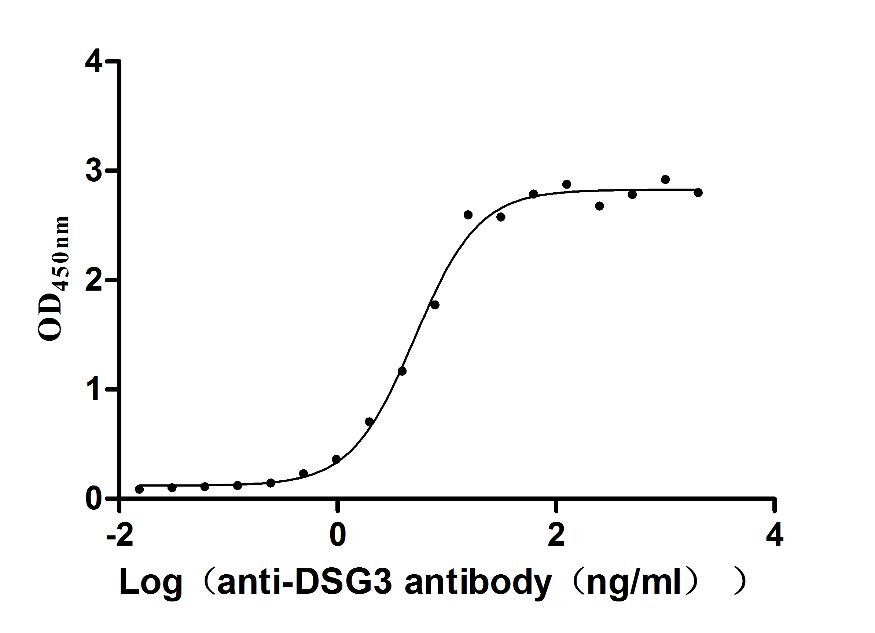Recombinant Human Oxysterols receptor LXR-beta (NR1H2), partial
In Stock-
中文名称:人NR1H2重组蛋白
-
货号:CSB-EP016045HU1
-
规格:¥2832
-
图片:
-
其他:
产品详情
-
纯度:Greater than 90% as determined by SDS-PAGE.
-
基因名:NR1H2
-
Uniprot No.:
-
种属:Homo sapiens (Human)
-
蛋白长度:Partial
-
来源:E.coli
-
分子量:28.7 kDa
-
表达区域:212-460aa
-
氨基酸序列GEGEGVQLTAAQELMIQQLVAAQLQCNKRSFSDQPKVTPWPLGADPQSRDARQQRFAHFTELAIISVQEIVDFAKQVPGFLQLGREDQIALLKASTIEIMLLETARRYNHETECITFLKDFTYSKDDFHRAGLQVEFINPIFEFSRAMRRLGLDDAEYALLIAINIFSADRPNVQEPGRVEALQQPYVEALLSYTRIKRPQDQLRFPRMLMKLVSLRTLSSVHSEQVFALRLQDKKLPPLLSEIWDVHE
Note: The complete sequence including tag sequence, target protein sequence and linker sequence could be provided upon request. -
蛋白标签:Tag-Free
-
产品提供形式:Liquid or Lyophilized powder
Note: We will preferentially ship the format that we have in stock, however, if you have any special requirement for the format, please remark your requirement when placing the order, we will prepare according to your demand. -
缓冲液:If the delivery form is liquid, the default storage buffer is Tris/PBS-based buffer, 5%-50% glycerol. If the delivery form is lyophilized powder, the buffer before lyophilization is Tris/PBS-based buffer, 6% Trehalose.
-
复溶:We recommend that this vial be briefly centrifuged prior to opening to bring the contents to the bottom. Please reconstitute protein in deionized sterile water to a concentration of 0.1-1.0 mg/mL.We recommend to add 5-50% of glycerol (final concentration) and aliquot for long-term storage at -20℃/-80℃. Our default final concentration of glycerol is 50%. Customers could use it as reference.
-
储存条件:Store at -20°C/-80°C upon receipt, aliquoting is necessary for mutiple use. Avoid repeated freeze-thaw cycles.
-
保质期:The shelf life is related to many factors, storage state, buffer ingredients, storage temperature and the stability of the protein itself.
Generally, the shelf life of liquid form is 6 months at -20°C/-80°C. The shelf life of lyophilized form is 12 months at -20°C/-80°C. -
货期:3-7 business days
-
注意事项:Repeated freezing and thawing is not recommended. Store working aliquots at 4°C for up to one week.
-
Datasheet & COA:Please contact us to get it.
相关产品
靶点详情
-
功能:Nuclear receptor that exhibits a ligand-dependent transcriptional activation activity. Binds preferentially to double-stranded oligonucleotide direct repeats having the consensus half-site sequence 5'-AGGTCA-3' and 4-nt spacing (DR-4). Regulates cholesterol uptake through MYLIP-dependent ubiquitination of LDLR, VLDLR and LRP8; DLDLR and LRP8. Interplays functionally with RORA for the regulation of genes involved in liver metabolism. Induces LPCAT3-dependent phospholipid remodeling in endoplasmic reticulum (ER) membranes of hepatocytes, driving SREBF1 processing and lipogenesis. Via LPCAT3, triggers the incorporation of arachidonate into phosphatidylcholines of ER membranes, increasing membrane dynamics and enabling triacylglycerols transfer to nascent very low-density lipoprotein (VLDL) particles. Via LPCAT3 also counteracts lipid-induced ER stress response and inflammation, likely by modulating SRC kinase membrane compartmentalization and limiting the synthesis of lipid inflammatory mediators. Plays an anti-inflammatory role during the hepatic acute phase response by acting as a corepressor: inhibits the hepatic acute phase response by preventing dissociation of the N-Cor corepressor complex.
-
基因功能参考文献:
- The authors report that, in Mycobacterium tuberculosis-infected macrophages, IL-36 signaling modulates cholesterol biosynthesis and efflux via LXR. PMID: 29367626
- The results suggest that in gestational diabetes mellitus cellular cholesterol homeostasis in the fetoplacental endothelium is modulated via LXR activation and helps to maintain its proper functionality. PMID: 29778664
- These findings provide basic information for evaluating the efficacy of LXR-targeted treatment in refractory carcinoma tissues of the human lung and pancreas PMID: 29181837
- LXR gene expression was significantly increased in obese children with obstructive sleep apnea-hypopnea syndrome (OSAHS). The severity of OSAHS was positively correlated with COX-2 levels. PMID: 28676625
- ULK1 has a role in RPS6KB1-NCOR1 repression of NR1H/LXR-mediated Scd1 transcription and augments lipotoxicity in hepatic cells PMID: 27846372
- These data suggest that high doses of insulin downregulate apoA-I gene expression in HepG2 cells through redistribution of FOXO1/LXRbeta complex, FOXA2, and LXRalpha on hepatic enhancer of apoA-I gene. PMID: 27404023
- Expression of some LXR-dependent genes of cholesterol trafficking is related to breast tumor characteristics, but not time to recurrence. PMID: 28982861
- a positive association of placental PPARgamma mRNA levels and placental DHA levels with baby weight PMID: 27578106
- GW3965 significantly increases the expression of liver X nuclear receptor beta (LXRbeta) mRNA, while the liver X nuclear receptor alpha (LXRalpha( mRNA expression did not change a lot, and sensitizes gefitinib by inhibiting NF-kappa B (NF-kappaB) activation. PMID: 28178657
- The effects of LXR agonist on interleukin-8 (IL-8) secretion and nuclear factor-kappa B (NF-kappaB) activation in human umbilical vein endothelial cells (HUVECs), is reported. PMID: 27489081
- Interactions among SNPs in nucleotide excision repair (NER) genes. PMID: 28115302
- we demonstrate that joint deletion of two short conserved motifs that bind UNR and DDX6 relieves repression of 4E-T-bound mRNA, in part reliant on the 4E-T-DDX6-CNOT1 axis. PMID: 27342281
- These results suggested that 25-HC promoted ADC cell migration and invasion in an LXR-dependent manner in the monoculture system but that in the coculture system, the 25-HC-induced IL-1beta secretion enhanced the effect of 25-HC in an LXR-independent manner. PMID: 28167281
- Protein level of LXRbeta protein was markedly reduced in focal cortical dysplasia. PMID: 27437943
- Distinct gene regulatory programs define the inhibitory effects of liver X receptors, NR1H2/NR1H3 and PPARG on cancer cell proliferation. PMID: 27401066
- These data describe a novel role for Unr in regulating cellular gene expression. PMID: 26936655
- predominant cytoplasmic localization of LXRbeta, which occurs in colon cancer cells but not in normal colon epithelial cells, allowed LXR ligand-induced pyroptosis PMID: 26450852
- these data identify a new mechanism of LXR regulation that involves TIPARP, ADP-ribosylation and MACROD1. PMID: 26814197
- Intestinal activation of LXR reduces the production of chylomicrons by a mechanism dependent on the apical localization of SR-B1. PMID: 26602218
- the release of NER components such as DNA damage binding protein 2 (DDB2) and Xeroderma Pigmentosum complementation group C protein (XPC) following oxidative stress might putatively involve their apoptotic role rather than DNA repair function. PMID: 26263968
- LXRalpha expression was not altered in NAFLD. PMID: 26019035
- Recent high-throughput analyses of RNA-protein interactions indicate that Unr binds to a large subset of cellular mRNAs, suggesting that Unr may play a wider role in translational responses to cellular signals than previously thought. PMID: 26009170
- Destabilization of the torsioned conformation of a ligand side chain inverts the LXRbeta activity. PMID: 26434697
- LXRb is the dominant isoform in the rat myocardium and the expression of both LXR isoforms (LXRa and LXRb) did not change after administration of T0901317 PMID: 25659329
- This study provides the first evidence to show LXR activation reduces cadmium-induced apoptotic cell death of human renal proximal tubular cells by inhibition of reactive oxygen species production and JNK activation. PMID: 25980575
- Activation of LXRs interfered with the release of interleukin-6 from macrophages and, thus, inhibited fibroblast activation and collagen release. PMID: 24618263
- LXR-b, through pannexin 1 interaction, can specifically induce caspase-1-dependent colon cancer cell death by pyroptosis. PMID: 25124554
- Data show that phospholipase C epsilon 1 (PLCE1) and liver X receptor-beta (LXR-beta) network interactions as important contributory factors for genetic predisposition in gallbladder cancer. PMID: 24863943
- Studies indicate that no liver X receptor (LXR) modulator has successfully progressed beyond phase I clinical trials. PMID: 24832115
- Report significant reduction in LXR-beta transcript in testes of men with azoospermia. PMID: 24842676
- structural analysis of human retinoid X receptor alpha-liver X receptor beta (RXRalpha-LXRbeta) heterodimer on its cognate element, an AGGTCA direct repeat spaced by 4 nt PMID: 24561505
- Treatment of human THP-1 macrophages with endogenous or synthetic LXR ligands stimulates both transcriptional and posttranscriptional pathways that result in the selective recruitment of the LXRalpha subtype to LXR-regulated promoters. PMID: 23686114
- LXR-beta has roles in regulation of endothelial cellular senescence, related to its antiatherogenic properties PMID: 24398515
- Data indicate that LXR-beta genotypes (rs35463555) and (rs2695121) were associated with risk of gallbladder cancer (GBC) as compared to healthy controls whereas LXR-alpha (rs7120118) was not associated with GBC risk. PMID: 23838803
- Variants in LXRalpha and LXRbeta genes are not potential contributors to the risk of metabolic syndrome and related traits in an Iranian population. PMID: 24100084
- Activation of LXR-alpha and LXR-beta Suppresses Proliferation of Human Colon Cancer Cells. PMID: 22610535
- LXRbeta has nonnuclear function in endothelial cell caveolae/lipid rafts that entails crosstalk with estrogen receptor alpha. PMID: 23867501
- Molecular modeling of interaction of 17(20)Z- and 17(20)E-pregna-5,17(20)-dien-21-oyl amides with the nuclear receptor LXRbeta PMID: 23987069
- In human primary melanocytes, MNT-1, and B16 melanoma cells, TO901317, a synthetic LXR ligand, inhibited melanogenesis. PMID: 23223141
- Both LXRalpha and LXRbeta are expressed in rheumatoid arthritis fibroblast-like synoviocytes during inflammatory responses. FLS PMID: 22990668
- Activation of LXR reduced the binding of the transcriptional factors AP-1 and NF-kappaB to the ET-1 gene promoter region, thereby regulating gene expression. PMID: 23018104
- Discussion of the role of LXR in orchestrating lipid homeostasis and neuroinflammation in the brain. The ability of LXR to attenuate Alzheimer disease pathology makes them potential therapeutic targets for this neurodegenerative disease. [Review Article] PMID: 22766509
- Pharmacological activation of endothelial LXRs reduces angiogenesis by restraining cholesterol-dependent vascular endothelial growth factor receptor-2 compartmentation and signaling. PMID: 22723445
- liver x receptors are activated by phospholipase A2 modified low density lipoproteins in human macrophages PMID: 22367754
- Te results of this study suggested taht genetic variations in MMEL1, ECE1, ECE2, AGER, PLG, PLAT, NR1H3, MMP3, LRP1, TTR, NR1H2, and MMP9 genes do not play major role among the Finnish AD patient cohort. PMID: 22027013
- LXR are involved in the metabolism and inflammation in human diseases; nonalcoholic fatty liver disease (NAFLD) is classically associated with lipid metabolic disorders and inflammatory responses. PMID: 22257474
- RXRalpha and LXR activate two promoters in placenta- and tumor-specific expression of PLAC1. PMID: 21937108
- Concomitant activation of ERbeta and inhibition of LXRbeta prevents 27-hydroxycholesterol effects and reduces the progression of Parkinson's disease by precluding tyrosine hydroxylase reduction and alpha-synuclein accumulation. PMID: 21951066
- There was no association between NR1H3 SNPs and pre-eclampsia, but the NR1H2 polymorphism rs2695121 was strongly associated with preeclampsia. PMID: 22029530
- we concluded that LXR-alpha/beta gene expression ratio is a critical factor to activate POMC gene expression in ACTH-secreting pituitary adenomas. PMID: 21356276
显示更多
收起更多
-
亚细胞定位:Nucleus.
-
蛋白家族:Nuclear hormone receptor family, NR1 subfamily
-
组织特异性:Ubiquitous.
-
数据库链接:
Most popular with customers
-
Recombinant Macaca fascicularis Angiotensin-converting enzyme (ACE2), partial (Active)
Express system: Mammalian cell
Species: Macaca fascicularis (Crab-eating macaque) (Cynomolgus monkey)
-
Recombinant Human papillomavirus type 16 Protein E7 (E7) (Active)
Express system: E.coli
Species: Human papillomavirus type 16
-
Recombinant Human Glucagon receptor (GCGR), partial (Active)
Express system: Mammalian cell
Species: Homo sapiens (Human)
-
Recombinant Human C-X-C chemokine receptor type 4 (CXCR4)-VLPs (Active)
Express system: Mammalian cell
Species: Homo sapiens (Human)
-
Recombinant Mouse Transthyretin (Ttr) (Active)
Express system: Mammalian cell
Species: Mus musculus (Mouse)
-
Recombinant Human IL12B&IL12A Heterodimer Protein (Active)
Express system: Mammalian cell
Species: Homo sapiens (Human)
-
Recombinant Human Claudin-6 (CLDN6)-VLPs, Fluorescent (Active)
Express system: Mammalian cell
Species: Homo sapiens (Human)
-
Recombinant Human Desmoglein-3 (DSG3), partial (Active)
Express system: Baculovirus
Species: Homo sapiens (Human)

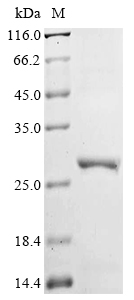


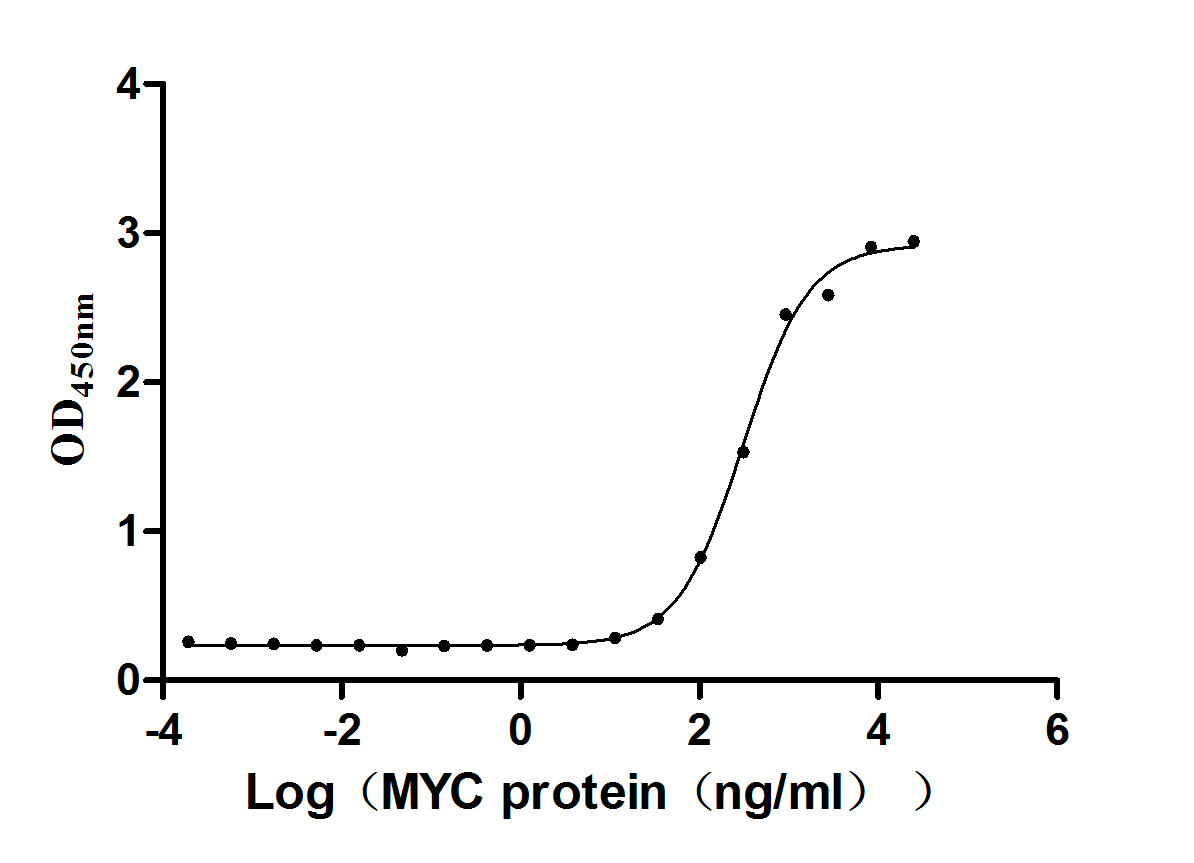
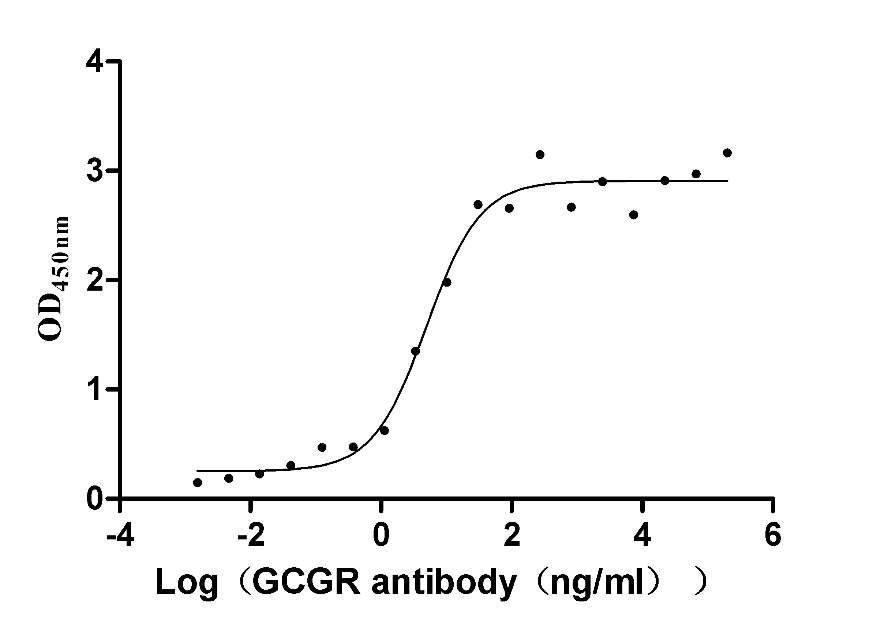
-AC1.jpg)
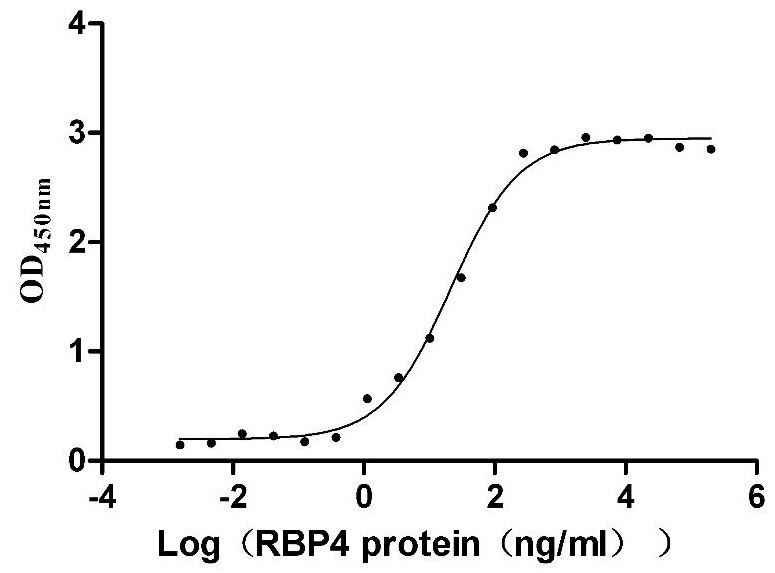
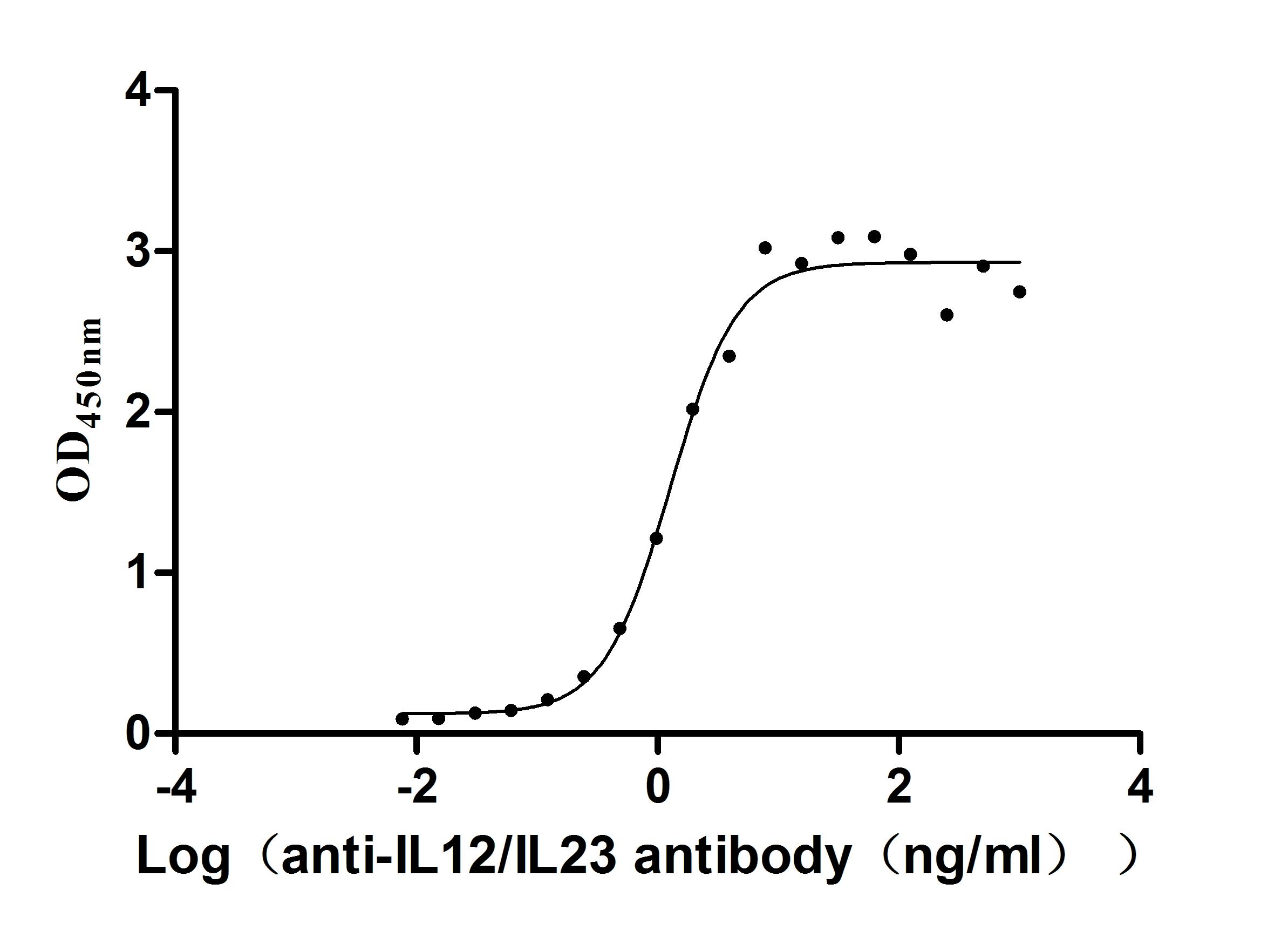
f4-AC1.jpg)
